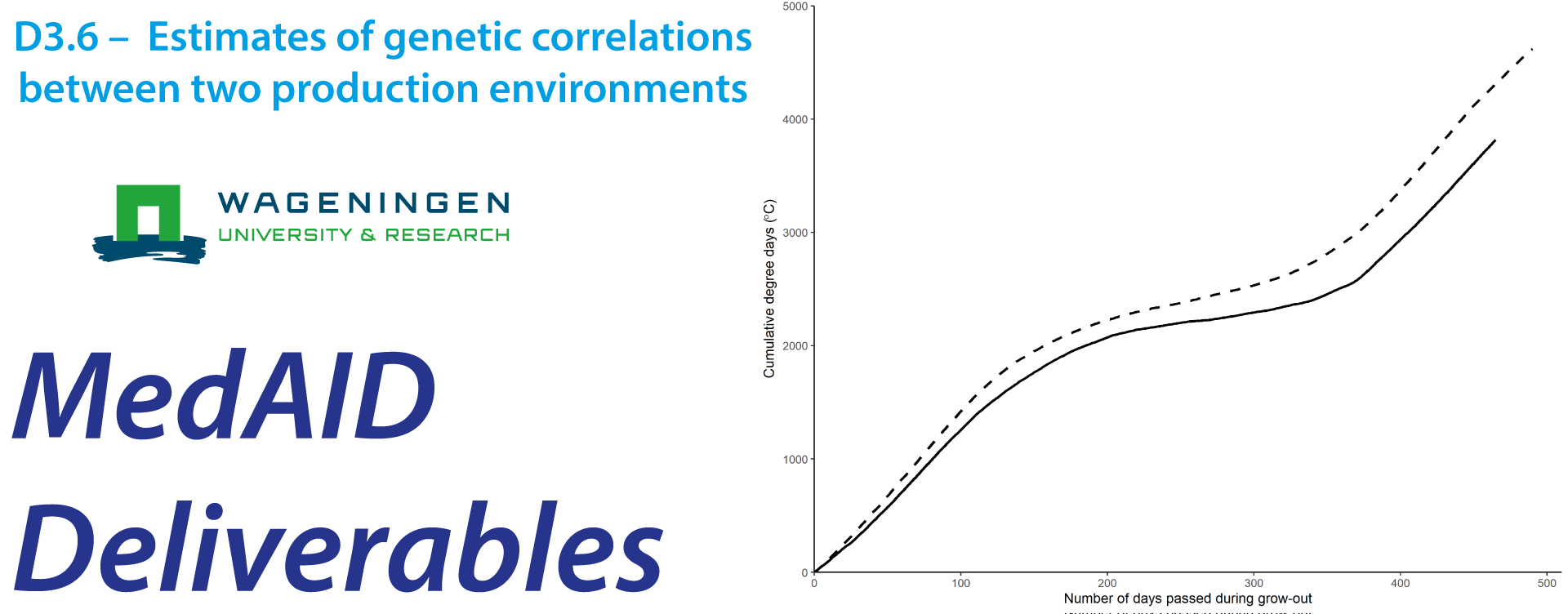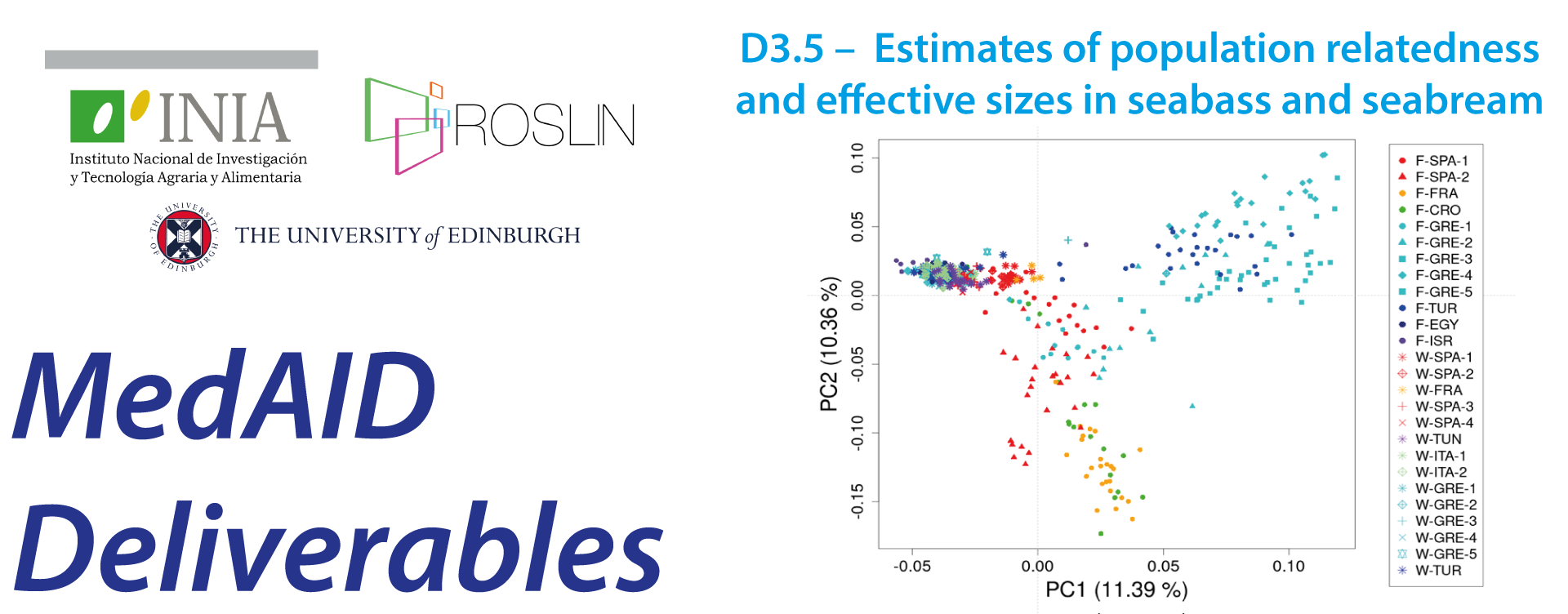Genotype-by-environment (GxE) interaction is the phenomenon that occurs when different genotypes perform differently in different environments. If GxE exists, selection strategies need to be adapted or separate environment-specific breeding programmes need to be developed. Annual temperature regimes vary across the Mediterranean basin. To estimate the GxE, gilthead seabream from the experiment described in Deliverable 2.4 (Estévez et al, 2021) were genotyped and phenotyped at the time of harvest in a real-scale case study, conducted simultaneously in Greece and in Spain. In order to produce comparable data and test the interaction with the environment between sites, apart from the husbandry practice, fish batches, feed and feeding regimes were the same in both sites. Also, sea cages were of the same size (16 m diameter). Low genetic correlations (< 0.7) point to the existence of GxE.
Differences were observed between local environmental conditions, particularly the temperature profile, at the two sites during the growing period. Growth rate (thermal growth coefficient, TGC) and harvest weight were found to have moderate to strong heritabilities in both sites and the same was true for the quality traits of fillet weight and fillet fat percentage. These heritabilities indicate that important improvements can be made with selective breeding in those traits. Harvest weight, growth rate, and fillet weight all showed strong GxE interactions, with genetic correlations below 0.5. This means that breeding for improved production efficiency across a range of environments needs to account for this strong GxE and cannot rely on measurements in a single environment. The GxE observed for fillet fat percentage was very limited (high genetic correlation of 0.9), which indicates that for this specific trait the local environmental conditions have limited effect on the genetic ranking of fish. These estimates are important to allow genetic improvement for production across different environmental conditions of the many sites where gilthead seabream are produced. In addition, the results from this deliverable also indicate the need to breed fish with an improved ability to deal with rapidly changing environmental conditions, i.e. caused by climate change.Continue reading


